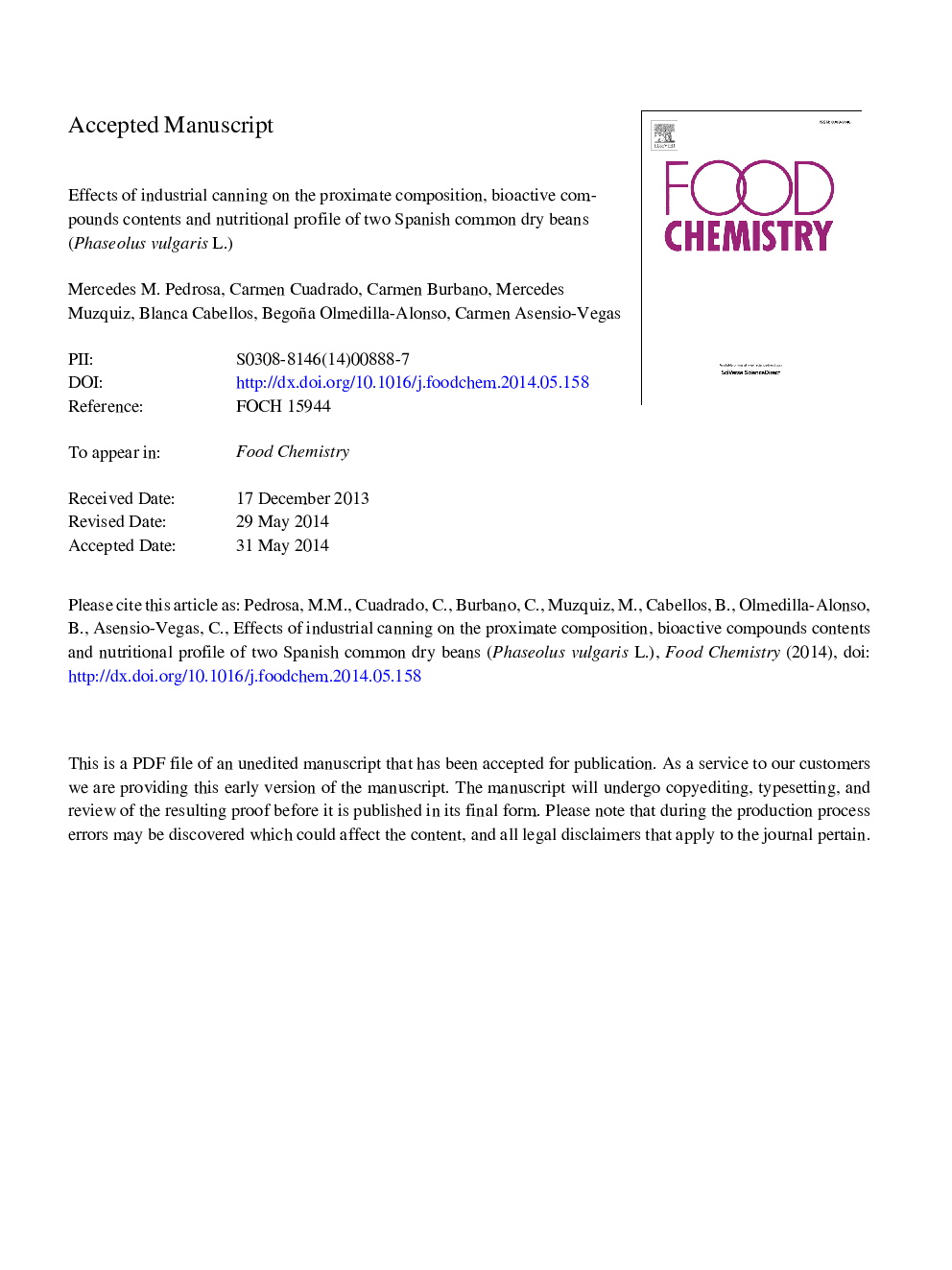| Article ID | Journal | Published Year | Pages | File Type |
|---|---|---|---|---|
| 7595683 | Food Chemistry | 2015 | 30 Pages |
Abstract
This study investigated the changes produced by canning in the proximate composition and in the bioactive constituents of two “ready to eat” Spanish beans. The foremost difference in the raw beans corresponded to the lectin: a higher content was found in raw Curruquilla beans (16.50 mg 100 mgâ1) compared with raw Almonga beans (0.6 mg 100 mgâ1). In general, industrial canning significantly increased the protein (>7%) and dietary fibre (>5%) contents of both beans varieties. However, the minerals, total α-galactosides and inositol phosphates contents were reduced (>25%) in both canned seeds. The trypsin inhibitors content was almost abolished by canning, and no lectins were found in either of the canned samples. Canned Curruquilla showed a decrease (38%) of their antioxidant activity. These “ready to eat” beans exhibited adequate nutritive profiles according to the USDA dietary recommendations. Furthermore, they had bioactive components content that are suitable for establishing a healthy lifestyle.
Related Topics
Physical Sciences and Engineering
Chemistry
Analytical Chemistry
Authors
Mercedes M. Pedrosa, Carmen Cuadrado, Carmen Burbano, Mercedes Muzquiz, Blanca Cabellos, Begoña Olmedilla-Alonso, Carmen Asensio-Vegas,
